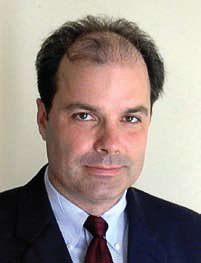Five Management Challenges Facing Airports Amid Uncertainty

While directors and their staffs manage through this uncertain time, there are significant trends to consider that are certain to shape airport capital planning, infrastructure and operations. Here are five (some immediately visible, some not):
1. Unmet Capital Needs
Airside, terminal and surface links to airports need expanding and upgrading across the industry. Given airline pressure on airports to keep costs low, non-aeronautical revenues and passenger facility charges (PFCs) are two funding sources that need to expand. Additional PFC revenues require that Congress include an increase in the current $4.50 ceiling when the Federal Aviation Administration (FAA) legislation is finally passed. While the Airport Improvement Program (AIP) continues to be vital for many airports, FAA funding patterns suggest that airports should expect no more than a marginal increase in federal funds for the foreseeable future.
2. Airport Service Obligations
Network airlines' a la carte pricing of food, baggage and seat selection together with their cutbacks in customer service continue to erode the quality of the air travel experience. As gateways to their communities and as public entities with service as a driving imperative, airports should shoulder more of the customer service burden. In order to improve passengers' end-to-end experiences, airports need to benchmark airport, tenant and federal agency operations; improve and expand concessions; and most of all instill an ethic that "if it happens at the airport, it is our responsibility."
3. The Greening of Aviation
Global warming and climate policy will help define the future of our economy - especially energy, manufacturing and transportation. Both presidential party nominees have committed to aggressive climate policies that will force severe reductions in the levels of anthropogenic greenhouse gas emissions. Many airports are preparing and beginning to conduct baseline emission inventories, implement sustainable planning and design greener buildings and operations. Airports not yet moving in this direction should. This is only the beginning.
4. Congestion Management
Given long-term growth in air travel and the paucity of new airports and airside infrastructure coming on-line, congestion management will be coming to many airports over the next two decades. A preview of the skirmish is happening today over what kind of capacity allocation system should be put in place to reduce delays at the New York airports. Lawsuits, press releases and bickering are not resolving the issue. For New York and elsewhere, airports, airlines and the FAA must acknowledge each other's legitimate roles in congestion management and sit down to work out a collaborative process. The sooner the better.
5. Getting to the Airport
High fuel prices are remaking surface transportation. Vehicle Miles Traveled (VMT) is trending significantly downward (-3.7% from May 2008 vs. 2007) and transit ridership is up dramatically (10.3% for light rail and 5.7% for commuter rail from the first quarter of 2007 to 2008). Even metropolitan areas in the wide-open West such as Denver, Phoenix and Salt Lake City are building first-class transit systems and connecting them to their airports. Given modal shifts, constrained landside facilities and environmental pressures, communities require these transportation alternatives. The intermodal connections need to be carefully planned with local transit and rail agencies to ensure they are seamless (i.e., platform-to-platform), time competitive with private automobile use and establish viable airport access markets.
Aviation's role in modern life and business, together with historic trends, suggest that the decline in air traffic will be a "blip" when we look back on it. Airlines are making adjustments, the economy will pick back up and there remain few existing alternatives to air travel. As we live through yet another challenging time, these five trends will continue to reshape our perpetually interesting industry.
Stephen D. Van Beek, Ph.D. is president and CEO of the Eno Transportation Foundation in Washington, D.C. Eno promotes creative solutions to transportation problems through executive training, policy forums and publications. Dr. Van Beek's past positions include manager of federal practice for Jacobs Consultancy (an aviation management consulting firm), executive vice president of policy for Airports Council International - North America and associate deputy secretary of the U.S. Department of Transportation.
![]()
.
2022 Charlotte Douglas International Airport Report of Achievement
 Giving back to the community is central to what Charlotte Douglas International Airport and its operator, the City of Charlotte Aviation Department, is about, and last year was no different.
Giving back to the community is central to what Charlotte Douglas International Airport and its operator, the City of Charlotte Aviation Department, is about, and last year was no different.
Throughout 2022, while recovering from the COVID-19 pandemic, we continued our efforts to have a positive impact on the Charlotte community. Of particular note, we spent the year sharing stories of how Connections Don't Just Happen at the Terminal - from creating homeownership and employment opportunities to supporting economic growth through small-business development and offering outreach programs to help residents understand the Airport better.
This whitepaper highlights the construction projects, initiatives, programs and events that validate Charlotte Douglas as a premier airport.
Download the whitepaper: 2022 Charlotte Douglas International Airport Report of Achievement.








